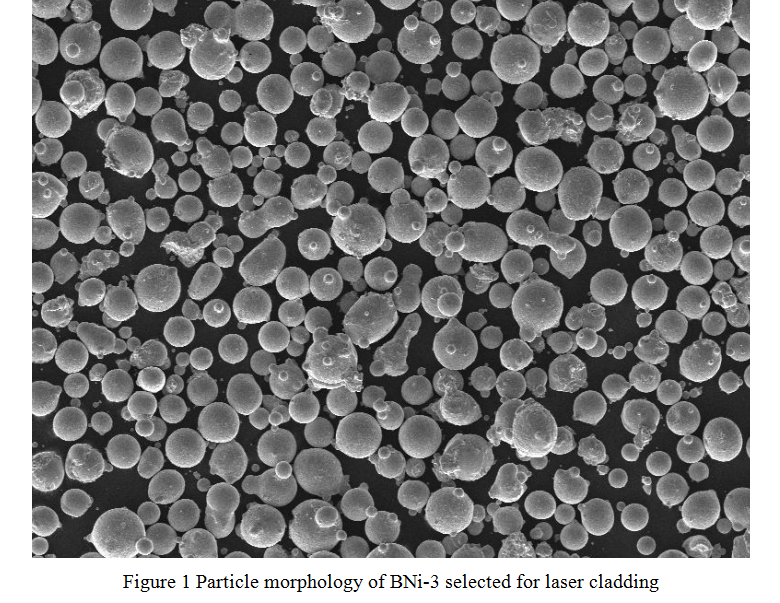FeCoNiCrAl 분말—복잡하게 들리지 않나요? 첨단 야금 및 재료 과학 분야에서 떠오르는 별 중 하나입니다. 이 다재다능한 합금은 극한 조건에서 놀라운 기계적 특성과 안정성으로 유명한 고엔트로피 합금(HEA) 그룹의 일부입니다. 그런데 왜 이렇게 많은 관심을 받고 있을까요? 이 흥미로운 재료, 고유한 특징 및 응용 분야에 대해 자세히 알아보겠습니다.
FeCoNiCrAl 분말 개요
FeCoNiCrAl 분말은 주로 철(Fe), 코발트(Co), 니켈(Ni), 크롬(Cr) 및 알루미늄(Al)으로 구성된 고엔트로피 합금입니다. 이러한 합금은 여러 주요 원소를 거의 동일한 비율로 균형을 이루어 고강도, 내식성 및 열적 안정성과 같은 매력적인 특성을 갖기 때문에 특별합니다.
| 주요 기능 | 세부 정보 |
|---|---|
| 구성 | 철(Fe), 코발트(Co), 니켈(Ni), 크롬(Cr), 알루미늄(Al) |
| 주요 특징 | 고강도, 내식성, 열적 안정성, 연성 |
| 애플리케이션 | 항공우주, 자동차, 에너지, 생체의학 및 적층 제조 |
| 고유한 판매 포인트 | 엔트로피 구동 안정성에서 파생된 탁월한 특성 |

구성 FeCoNiCrAl 분말
FeCoNiCrAl과 같은 고엔트로피 합금은 엔트로피 안정화 개념을 기반으로 합니다. 여러 금속을 거의 동일한 비율로 혼합하면 별도의 상으로 분리되지 않고 단일 상 고용체를 형성합니다. 자세한 내용은 다음과 같습니다.
| 요소 | 역할 |
|---|---|
| 철(Fe) | 강도와 내구성 향상 |
| 코발트 (Co) | 자기적 특성 및 온도 안정성 제공 |
| 니켈(Ni) | 인성 및 내식성 증가 |
| 크롬(Cr) | 내식성 및 내산화성 향상 |
| 알루미늄(Al) | 내산화성 및 경량 특성에 기여 |
이 특정 혼합물은 기계적, 열적 및 화학적 특성의 균형을 갖춘 조화로운 합금을 생성합니다.
FeCoNiCrAl 분말의 특성
FeCoNiCrAl 분말이 특별한 이유는 무엇일까요? 이것은 단순한 또 다른 합금이 아니라 극한 환경에서 재료를 변화시키는 게임 체인저입니다. 눈에 띄는 특징을 강조해 보겠습니다.
| 특징 | 설명 |
|---|---|
| 높은 강도 | 기존 합금보다 강하고 높은 기계적 하중을 견딜 수 있습니다. |
| 열 안정성 | 높은 온도에서도 구조적 무결성을 유지합니다. |
| 내식성 | 산화 및 부식 환경에 대한 탁월한 저항성. |
| 연성 | 유연성을 제공하여 취성 파괴의 위험을 줄입니다. |
| 경량 | 많은 기존 합금보다 가벼워 항공우주와 같은 응용 분야에서 에너지 소비를 줄입니다. |
| 내마모성 | 많은 기존 합금보다 마찰 및 기계적 마모를 더 잘 견딥니다. |
FeCoNiCrAl 분말의 종류
여기서 더 흥미로워집니다. FeCoNiCrAl 분말은 특정 응용 분야에 맞게 다양한 등급으로 제공됩니다. 다음은 고유한 특징을 강조하는 최소 10개의 특정 모델 목록입니다.
| 모델 | 고유 기능 |
|---|---|
| FeCoNiCrAl-1 | 균형 잡힌 기계적 특성을 가진 범용 등급. |
| FeCoNiCrAl-2 | 향상된 내식성, 해양 환경에 이상적입니다. |
| FeCoNiCrAl-Ti | 인성 및 내마모성을 높이기 위해 티타늄을 통합합니다. |
| FeCoNiCrAl-Nb | 우수한 고온 성능을 위해 니오브를 함유합니다. |
| FeCoNiCrAl-Cu | 향상된 열 및 전기 전도성을 위한 구리 첨가. |
| FeCoNiCrAl-B | 입자 미세화 및 기계적 안정성 향상을 위해 붕소 강화. |
| FeCoNiCrAl-N | 높은 변형률에서 탁월한 강도를 위해 질소 안정화. |
| FeCoNiCrAl-H | 수소 저장 및 연료 전지 응용 분야를 위한 수소 저항성 등급. |
| FeCoNiCrAl-Si | 초고온에서 산화 저항성을 높이기 위한 실리콘 첨가. |
| FeCoNiCrAl-W | 우수한 내마모성 및 크리프 저항성을 위한 텅스텐이 풍부한 변형. |






애플리케이션 FeCoNiCrAl 분말
FeCoNiCrAl 분말의 다재다능함은 다양한 산업 분야에서 유용하다는 것을 의미합니다. 가장 빛을 발하는 곳을 살펴보겠습니다.
| 산업 | 애플리케이션 |
|---|---|
| 항공우주 | 터빈 블레이드, 로켓 부품 및 열 차폐. |
| 자동차 | 고성능 차량용 경량, 내식성 부품. |
| 에너지 | 열교환기, 발전소 부품 및 수소 저장. |
| 바이오메디컬 | 생체 적합성으로 인한 임플란트 및 보철물. |
| 적층 제조 | SLM(Selective Laser Melting) 및 EBM(Electron Beam Melting)과 같은 분말 베드 융합 기술. |
| 방어 | 갑옷 부품 및 중요한 군사 하드웨어. |
| 전자 제품 | 고성능 전기 접점 및 열 관리 시스템. |
FeCoNiCrAl 분말의 장점
다른 재료보다 FeCoNiCrAl 분말을 선택하는 이유는 무엇일까요? 자세히 살펴보겠습니다.
| 이점 | 중요한 이유 |
|---|---|
| 뛰어난 강도 | 기존 합금에 비해 응력 하에서 더 나은 성능을 발휘합니다. |
| 높은 다용도성 | 극한의 열과 저온 조건 모두에 적합합니다. |
| 내식성 | 가혹한 환경에서 더 오래 지속되어 유지 관리 비용을 절감합니다. |
| 적응 가능한 구성 | 원소 구성을 조정하여 특정 요구 사항에 맞게 조정할 수 있습니다. |
| 환경 친화적 | 긴 수명과 재활용성으로 인해 자원 사용을 줄일 수 있습니다. |
사양 및 표준
일관된 성능을 보장하기 위해, FeCoNiCrAl 분말 엄격한 사양으로 생산됩니다.
| 사양 | 세부 정보 |
|---|---|
| 분말 크기 범위 | 15–45 µm, 45–105 µm(적층 제조에 일반적). |
| 순도 | ≥ 99.9% |
| 표준 | ISO 9001, ASTM F3049(적층 제조용). |
| 밀도 | ~7.9 g/cm³ |

공급업체 및 가격
적절한 공급업체를 찾는 것이 중요합니다. 다음은 몇 가지 인기 있는 공급업체와 대략적인 가격 세부 정보입니다.
| 공급업체 | 지역 | 가격 책정 | 참고 |
|---|---|---|---|
| AMETEK Specialty | 미국 | $250–350/kg | 항공우주용 고품질 분말. |
| 호가나스 AB | 유럽 | $200–300/kg | 글로벌 입지를 갖춘 신뢰할 수 있는 공급업체. |
| 샌드빅 머티리얼즈 | 글로벌 | $220–320/kg | 분말 크기의 일관성으로 유명합니다. |
| 목수 첨가제 | 미국 | $230–330/kg | 적층 제조 분말에 중점. |
자주 묻는 질문
| 질문 | 답변 |
|---|---|
| FeCoNiCrAl 분말이란 무엇입니까? | 철, 코발트, 니켈, 크롬 및 알루미늄으로 만들어진 고엔트로피 합금. |
| 주요 응용 분야는 무엇입니까? | 항공우주, 자동차, 에너지 및 생체의학 산업 등에 사용됩니다. |
| 왜 고엔트로피 합금이라고 불립니까? | 여러 주요 원소를 동일하거나 거의 동일한 비율로 균형을 이루기 때문입니다. |
| 기존 합금과 어떻게 비교됩니까? | 뛰어난 강도, 내식성 및 열적 안정성을 제공합니다. |
| 3D 프린팅에 적합합니까? | 예, 분말 베드 적층 제조 기술에 널리 사용됩니다. |

